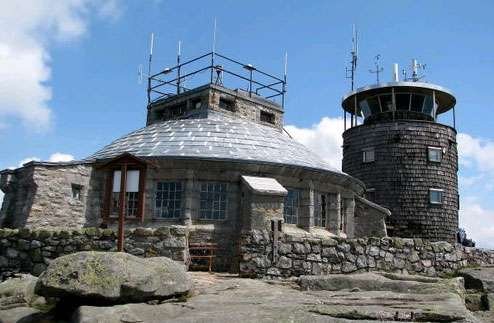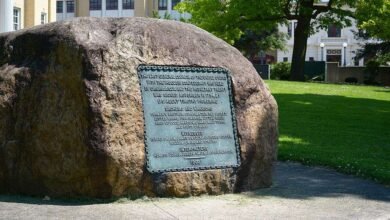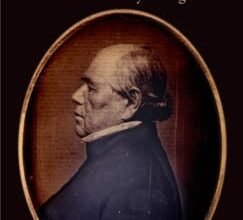Falconer Natural History Lecture Series Announced


 The University at Albany’s Atmospheric Sciences Research Center has announced it’s Summer 2025 Raymond Falconer Natural History Lecture Series. The Falconer Lecture Series topics range from renewable energy, climate change and extreme weather, to ecological restoration, electric bicycles and more.
The University at Albany’s Atmospheric Sciences Research Center has announced it’s Summer 2025 Raymond Falconer Natural History Lecture Series. The Falconer Lecture Series topics range from renewable energy, climate change and extreme weather, to ecological restoration, electric bicycles and more.
The lectures will take place Tuesdays, biweekly from July 22 through August 19 at 7 pm at the Whiteface Mountain Field Station at 110 Marble Mountain Lane in Wilmington, NY. The lectures are free and open to the public. They will also be available, along with previous lectures, on the Atmospheric Sciences Research Center YouTube Channel.
July 22
“Environmental DNA in Action: Monitoring Fish Communities in Northern NY” with Carrianne Pershyn, Biodiversity Research Manager, Ausable Freshwater Center
What can a drop of water reveal about an entire fish community? This talk explores how environmental DNA (eDNA) is a new tool in our toolbox and reshaping the way we monitor native and non-native fish species in the Adirondacks.
From detecting elusive brook trout, brown trout, and rainbow trout to tracking Atlantic salmon, American eel, and lamprey in Lake Champlain tributaries, this lecture will dive into real-world examples of how eDNA metabarcoding helps conservationists map species distributions, evaluate restoration success, and uncover hidden biodiversity — without ever catching a fish.
Pershyn has worked in many capacities for the Ausable Freshwater Center since 2014. In late 2018, she became a full-time research associate for the organization, supporting our Biodiverse Habitats program and monitoring brook trout and other native organisms that rely on Ausable streams. She holds an M.S. in Fish and Wildlife Biology and Management from SUNY College of Environmental Science and Forestry in Syracuse, NY and a B.S. in Ecology from Plattsburgh State University.
Her master’s thesis research focused on Brook Trout habitat use, recruitment, and population genetics in high elevation, groundwater-fed tributaries of the headwaters of the Ausable River. She is formally trained in natural history and ecology of freshwater habitats, with a variety of past research experience on terrestrial and aquatic wildlife.
Her 2018-2019 field projects with AFC include expanding and maintaining a network of temperature loggers across the watershed, designing and implementing eDNA field and lab studies to map the spatial distribution of brook trout and other salmonids, and planning future research projects that focus on Brook Trout ecology and conservation in the Adirondacks. She has worked in Adirondack conservation and lived in the Park for more than a decade.
August 5
“First Look at Microbiology in Clouds at Whiteface Mountain for the Summer 2024” with Sarah Lombardo, Ph.D. Student, Atmospheric Sciences Research Center
Whiteface Mountain (WFM) in Northern New York is the site of a historic mountaintop atmospheric observatory with an ongoing cloud water chemistry monitoring program that has been operating every summer (June through September) since 1994.
Though long-term chemical analysis has been conducted, no analysis on the microbiome has been completed at WFM. Over the years, a new chemical regime has been reported in the cloud water with missing analytes. Knowing how microbes can interact with chemicals and chemicals interact with microbes will add another lens of analysis to our cloud water studies.
Starting in 2024, the Atmospheric Sciences Research Center began microbial analysis of cloud water filters using 16S DNA sequencing with the Oxford Nanopore and have been able to start identifying common microbial species found in WFM clouds.
Key attention has been paid to filters collected during times of intense storms and wildfire smoke. Overall, this study seeks to highlight microbially studied filters based on chemical composition and natural disaster significance to offer insight on the connections that can be made among the three.
Sara Lombardo started working in the Lance lab in July 2023, prior to starting their graduate studies at UAlbany in the Fall of 2023. Sara has undergraduate degrees in Chemistry and Environmental Sciences from the University of Virginia and found the perfect overlap studying clouds at Whiteface Mountain.
Since joining the Lance lab, Sara has been fascinated with the interaction of chemical and microbes in clouds and the impacts these can have on human health as well as nutrient cycling. Sara firmly believes that science must be interlinked with justice and strives to bring that perspective to every aspect of research.
August 19
“The Image is Not the Model” with Saikat Chakraborty, Ph.D., Associate Professor of Chemistry, Paul Smith’s College
This talk will highlight the research on the generation of carbon-free solar fuels from water, one of the many ways to combat climate change. Saikat will also employ his images, centered mostly around the boreal wetland ecosystems of the Adirondacks, to emphasize the importance of artistic experience and how it diverges from documentation and scientific modeling. The transition from scientific research to creative expression will portray why this divergence is significant, and yet not contradictory to understanding, loving, and caring for these special places.
Born and raised in India, Saikat came to the US to pursue graduate studies. He received his PhD in Chemistry from the University of Rochester where he worked on the generation of carbon-free solar fuels from water. He is a resident of Saranac Lake and has been a faculty member at Paul Smith’s College since Fall 2021.
Photo of ASRC Whiteface Mountain Field Station’s Summit Observatory courtesy University at Albany’s Atmospheric Sciences Research Center.
Source link




